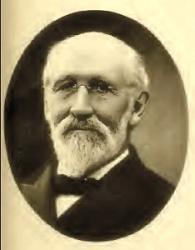1934 - 2003 Hymnal Number: 328 Composer of "SACRED SONG" in The Presbyterian Hymnal Dale Wood was born in Glendale, California, on February 13, 1934, of Finnish-Polish parentage (his father's last name was Wojtkiewiecz, which immigration authorities shortened to Wood). Dale grew up in Los Angeles and graduated from Franklin High School, where he was voted "most likely to succeed" in his class. Raised a Lutheran, his career as a composer was launched at age 13 when he won a national hymn-writing competition for the American Lutheran Church. His first choral anthem was accepted for publication one year later. His knowledge of music was immense, and his appreciation ran the gamut from classical to the Broadway stage. He admired composers from Leroy Anderson to Villa Lobos, and he was comfortably conversant with artists such as Marcel Dupré and many theatre organists. Although he attended Occidental College, he never received a college degree. In the words of his former wife, Gloria, "No, the boy didn't need any degree. He fell out of the nest with all he needed."
Dale began playing the organ in church at age 14, and he served as organist and choirmaster at Eden Lutheran Church in Riverside and The Episcopal Church of St. Mary the Virgin in San Francisco. He published numerous articles on worship, liturgy, and church music and was a contributing editor to the Journal of Church Music for over a decade. He lectured and conducted choral festivals throughout the United States, Canada, and Northern Europe, and served as editorial consultant for several hymnals. He headed the publication committee of the Choristers Guild from 1970 to 1974. After serving as music director at the Grace Cathedral School for Boys in San Francisco from 1973 to 1974, he was appointed executive editor for The Sacred Music Press, a position he held from 1975 to 1996. He served as editor emeritus of The Sacred Music Press from 1996 until 2001. The American Society of Composers, Authors and Publishers (ASCAP) honored Dale Wood annually from 1967 for his work. In April 1993 Dale was honored with the prestigious Exemplar Medallion from California Lutheran University for his "more than forty years of joyful service to the church and humanity through the inspiration of his music."
Hymns and canticles composed by Dale Wood are found in the Lutheran Book of Worship/, Worship II (a Roman Catholic hymnal), Seventh Day Adventist Hymnal, The Presbyterian Hymnal, The United Methodist Hymnal, the Agape Hymnal Supplement, the Moravian Book of Worship, the Chalice Hymnal, and several hymnal supplements.
Wood's musical activities were not limited to sacred music. While still a college student, he entertained as organist at the Orpheum Theater in Los Angeles and appeared on television shows produced in Hollywood. In 1975 he was employed by the Royal Viking Line to entertain passengers on a 70-day cruise of the South Pacific and Orient.
For many years Dale maintained his home and studio at The Sea Ranch, California, 115 miles north of San Francisco. It was here, amidst acres of redwood trees and gentle meadows on the rural and spectacular coastline of Northern California, that he composed most of his organ works, using a three-manual electronic theatre organ. Dale had a strong theatrical streak in him, and he maintained close ties with the American Theatre Organ Society. In his later years he collaborated with his partner, Ivan de la Garza, in designing the ATOS website.
In 1977 Dale and jazz pianist George Shearing created a volume of organ settings of early American folk hymns entitled Sacred Sounds from George Shearing. Over a period of 11 weeks Shearing had recorded a series of improvisations at the piano. After the tapes were transcribed to paper, Shearing visited Dale in his studio at The Sea Ranch. Dale spent hours at the organ making suggestions of registrations and textures, while Shearing with his critical ear listened for accuracy.
In recent years, Dale composed at the computer and was able to hear his work played back via MIDI, obviating the need for tedious proofreading.
Most of his pieces were conceived with a three-manual organ in mind but are readily adaptable to smaller instruments. He gave general suggestions for registrations, but he always trusted in the performer's own imagination ("The printed music is just a blueprint, and it is the performer's job to complete the project," he liked to say). He used unusual techniques in several pieces, such as wedges in keys for pedal points ("Il est né," "Meditation on KEDRON"). His hymn arrangements were not all easy. Many require a significant amount of finger substitution; several involve "bridging" (playing on two manuals simultaneously with one hand); and his pedal lines sometimes go to the top of the pedalboard ("Amazing Grace" sports a high F#). Nor was he afraid to write pieces with accidentals. I cautioned him about a piece in six flats he planned to include in an upcoming volume, suggesting that some organists would find it overly challenging. He responded, "Well, then, they'll just need to practice!"
--www.welchorganist.com/
Dale died peacefully at his Sea Ranch home on April 13, 2003.
Dale Wood


 My Starred Hymns
My Starred Hymns






